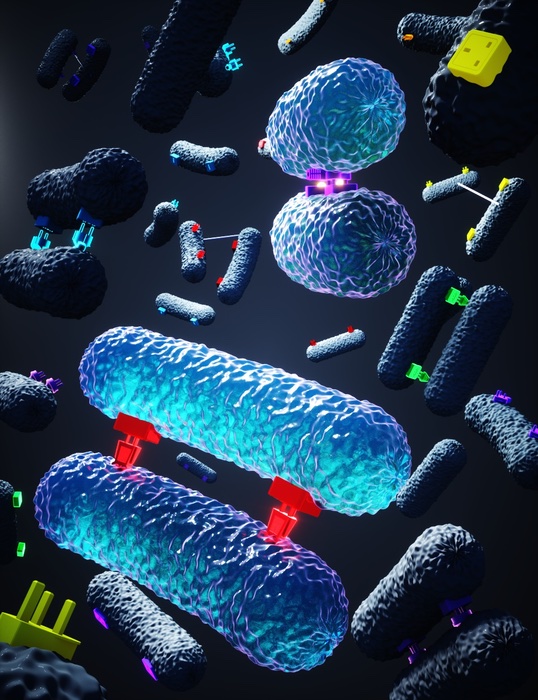Researchers led by Imperial College London have uncovered new insights into how bacteria hook up to exchange DNA that helps them resist antibiotics. Understanding the molecular basis of bacterial conjugation could enable researchers to develop new approaches that slow the spread of antimicrobial resistance.
One of the primary ways harmful bacteria acquire resistance to antibiotics is by receiving DNA from other bacteria that are already resistant. This DNA exchange is made via a process called conjugation, akin to bacterial sex, whereby two bacteria form an intimate attachment, and one transfers a packet of DNA to the other.
The findings are published in the journal Nature Microbiology in a paper titled, “Mating pair stabilization mediates bacterial conjugation species specificity.”
“Bacterial conjugation mediates contact-dependent transfer of DNA from donor to recipient bacteria, thus facilitating the spread of virulence and resistance plasmids,” wrote the researchers. “Here we describe how variants of the plasmid-encoded donor outer membrane (OM) protein TraN cooperate with distinct OM receptors in recipients to mediate mating pair stabilization and efficient DNA transfer.”
The new knowledge could also help scientists predict the spread of emerging resistance among bacterial pathogens, as it demonstrates why some DNA packets, called plasmids, are found in specific bacterial species.
Lead researcher Gad Frankel, PhD, professor, molecular pathogenesis, department of life sciences and the MRC Centre for Molecular Bacteriology and Infection at Imperial, said: “The spread of antimicrobial resistance is an acute problem affecting human health globally, and we urgently need new tools to fight it.
“Understanding, and ultimately interrupting, the process by which bacteria share their abilities to evade antimicrobial drugs will go a long way to helping stall the spread of resistance.”
The team found that during conjugation, a protein from the donor bacteria, termed TraN, acts as a “plug” to attach itself to a unique outer membrane receptor, or “socket,” in recipient bacteria. Plasmids that are shared by conjugation express one of four variants of the protein TraN, with each variant binding a specific outer membrane receptor in the recipient bacteria, which enables efficient transfer of plasmids from one cell to the other.
The team from Imperial collaborated with colleagues at the University of Virginia to use high-power cryo-electron microscopy to visualize the attachment process. The researchers used advances in artificial intelligence and bioinformatics to analyze the TraN proteins of several resistance plasmids and the recipient bacteria receptors for several important human bacterial pathogens.
Wen Wen Low, a PhD student in the department of life sciences and the MRC Centre for Molecular Microbiology and Infection at Imperial, said: “These protein-receptor pairings explain conjugation species-specificity. Using plasmid datasets from Enterobacteriaceae—a family of bacteria that include Salmonella and E. coli—we showed how our classification reflects the real-world distribution of resistance plasmids.”
Konstantinos Beis, PhD, from the department of life sciences at Imperial and Research Complex at Harwell, Oxfordshire, added: “These findings present a key advancement in understanding how conjugative mating pairs are formed and will allow us to predict the spread of emerging resistance plasmids into high-risk bacterial pathogens.”



Comments are closed.